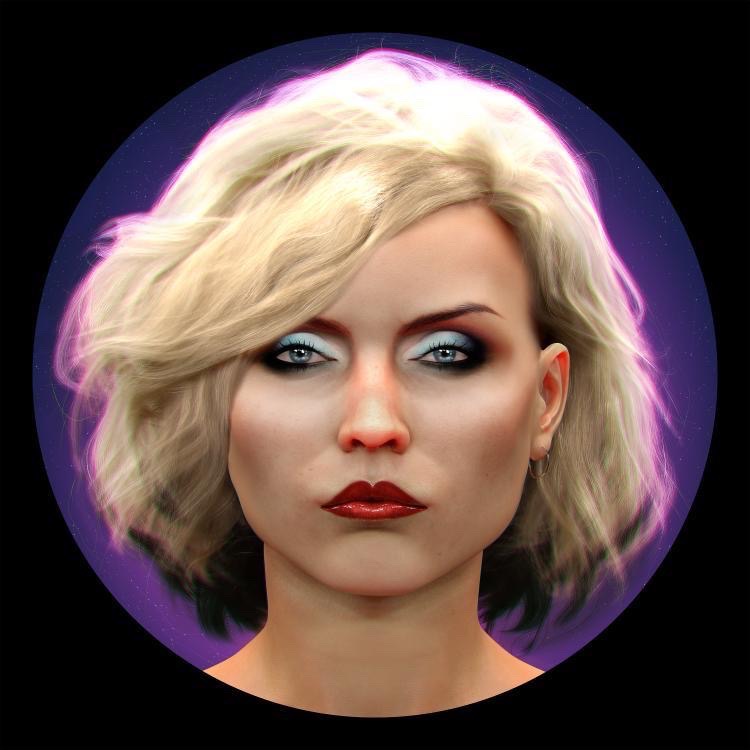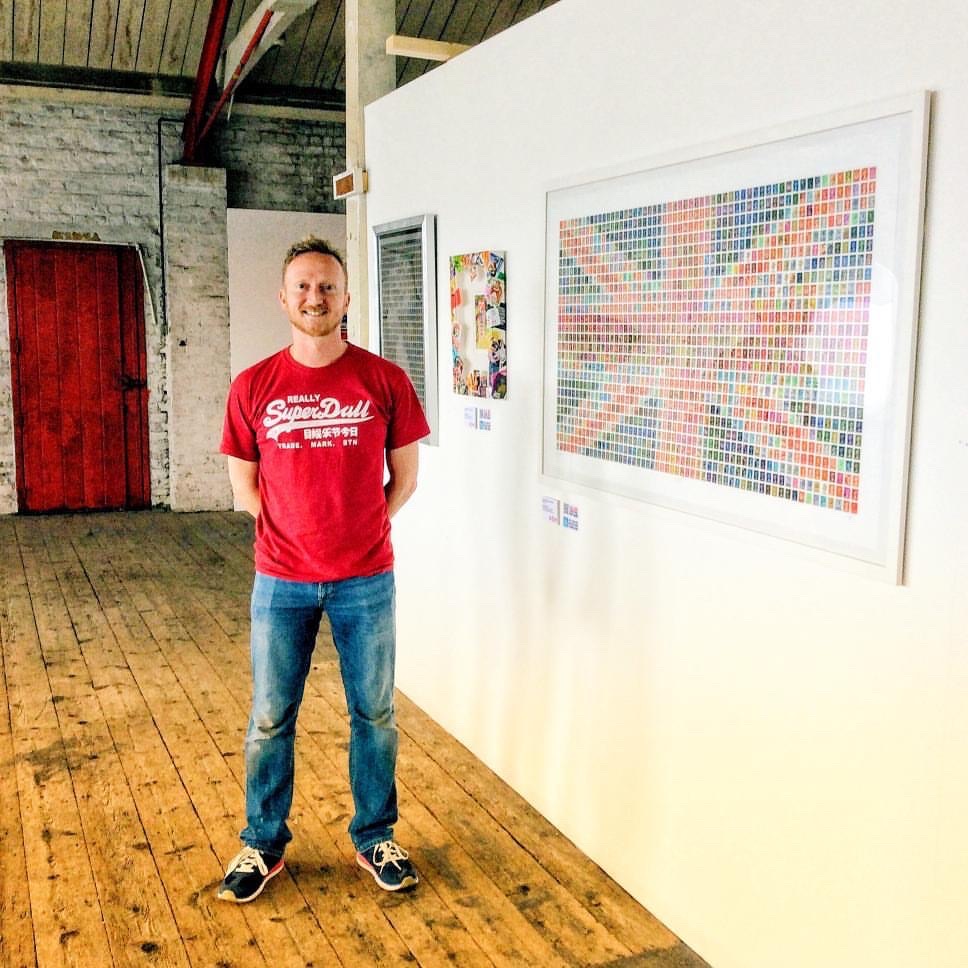@strangecaseco - The Art of Being Queer - Artist Feature
- theartofbeingqueer

- Apr 6, 2020
- 5 min read
Tonight's queer artist feature is @strangecaseco

Artist Statement:
Jamie Durrant (under the moniker of 'Strange Case') lives in Brighton, England. His work touches on many themes, around pop culture, masculinity and the sex industry. He's inspired by Warhol, John Waters, Touko Laaksonen, Debbie Harry, Grace Jones, Mel Odom amongst many others.
I left school in 1987 and went to Art College with high hopes to learn the skills that I wanted in order to enter the field of special effects makeup. I was very narrow minded and focused only on what I wanted to achieve at that time. I wanted to create artwork and learn new skills but spent what felt an inordinate amount of time in a portable classroom watching slides in the dark and writing essays. That's not what I wanted to do. So I didnt, and the art college asked me to leave. From there, I went straight into creating computer graphics for a local TV show called 'Knightmare'. It was one of the first live action CGI shows of it's time. From there I went to sculpting animatronics and sculptures for an interactive museum and restaurant and assisting in applying prosthetic appliances for national TV. I'd always been a big special effects fan, so had sculpted weird creatures and models in my spare time. It was around that time that visual special effects were moving into computer generated images, so I thought it best to learn this new process. And that's how I moved from physically creating models to digitally creating them.
- Do you believe people are born artists? I think everyone is born with the potential to be an artist, but unless it's nurtured then it can stagnate. Luckily both my parents are very talented, my mother paints and my father has a creative and mechanical mind, building and repairing vintage boats and cars.
- Was there a pivotal moment when you decided to follow your path as an artist? I started selling my own artwork after a difficult period in my life; I had just taken Microsoft to court over their inaction to deal with homophobia within the company I was working at. It caused me to suffer from depression and took around a year for it to reach the court date, at which point Microsoft settled the case out of court. I decided I neeeded to take a break from that industry and try my hand at creating and selling art on the market.
- What is the most challenging part of being an artist? For me, it's finding the time to create art. I'm working fulltime again as a graphic designer back in the video games industry, creating art for other people. Most of the time, it's not to my taste or style, so I treat it purely as work. As a commercial artist, you have to keep the client happy. Creating art for myself is more challenging. When I create artwork myself, the idea can be swimming around my head for months or even years before I feel ready to commit it to paper. I keep a diary where I write down every snippet of an idea, going back to it again and again, reforming it into some that I think might work (and hopefully sell.) One day I'd hope to be able to create art so that it can support me fulltime in creating more art.
- If you could work within a past art movement, which would it be? It would have to have been the Pop Art movement. That whole era fascinates me. New York in the 60s and 70s, with the factory, where Warhol created artwork on an industrial scale. Surrounding himself with talented, bizarre and inspirational people such as Debbie Harry, Candy Darling, Bowie, William S Burroughs, Edie Segwick, Basquiat and Haring. They all still have an incredible impact on the art industry today. Funnily enough, my next door neighbour is an artist, Peter Sedgley (A member of the Op Art movement, with multiple works in the Tate Gallery). I asked him one day if he had ever met Warhol, and he had, back in the 70s at one of his exhibitions. The two had a conversation about their favourite artists. Warhol, admitting that the only British artist he liked was Billy Apple, at which point Sedgley reminded Warhol that he was in fact a Kiwi. Due to that fact it means I'm just two degrees seperated from the man himself. That makes me chuckle.
- How would you categorize your style? Eclectic ? Personally, I've never thought I'd fallen onto one particular style. Every range of prints tends to have it's own style. I might one day settle on a style, but I doubt that. I'm always trying new techniques.
- Where do you derive your inspiration from? Everywhere and anywhere. Popular culture, childhood memories, walking around the streets of Brighton, I might see one frame in an old film that is so beautiful that I feel obliged to replicate it and reform it into something new.
- So how do you go about choosing a subject? I tend to choose things that I've also have a passion for. I love the old black & white Hollywood movies, they had such glamour, character and style. Lit within an inch of their lives to appear these perfect divas. My recent Tom of Finland inspired portrait, 'Master Tom' comes from my youth, where growing up as a gay kid in rural Norfolk, chancing upon a magazine featuring Touko Laaksonen's men had a big impact on my self view. Gone was the view of the gay male being sissy and effiminate, these iconic drawings portrayed gay men as hyper masculine and highly sexual creatures.
- You dance with Pop culture and death in your paintings and you turn them into something new, something that makes your viewers mind question their reality like my favorite 'Monrobot 2.0'. How did you come up with such an extraordinary concept? I chose to do a piece based on Marilyn, as I was aware that her image was being digitally recreated for some new movies. The story of her image has always interested me, as when she died in her home in California, her estate registered her final abode as one in New York. This was to avoid estate taxes. Unfortunately, for her estate, New York does not offer the same laws regarding celebrities' images. They have been fighting ever since to reclaim those rights. I portrayed her as a robot, as in that state, she will do exactly as told, turn up to set on time, endlessly turning out calculated performances and never complain. I've always liked this quote by Marilyn, which is even more apt today; "I knew I belonged to the public and to the world, not because I was talented or even beautiful, but because I had never belonged to anything or anyone else."
- In those pop icons portraits that made me know you in person, you surround their background by Swarovski crystals that mark out the constellations that were in the sky over the country they died at. What's behind that? Do you try to get a message through? I like to add constellations behind the portraits to tie the place and date of their birth (or death) to the universe. I have a spiritual connection to the law of conservation. That is, within Earth's closed eco system, mass cannot be created or destroyed. It is simply repurposed. Humans are created from matter and we maintain it in one form or another. It's a cycle of atoms, death to birth. You've probably got atoms in your body that existed within your favourite departed artists, celebrities, musicians or loved ones.. although less likely if they weren't cremated.
- Where can people see more of your work? Currently, my art is being displayed within the Cloud Gallery group, which has branches in Brighton, Guildford, Chichester, Worthing & Horsham, along with southern England. You can also view all of my artwork on my website http://strangecase.com as well as a more random stream of ideas and photos on my Instagram page :
Instagram http://instagram.com/strangecaseco
Facebook http://facebook.com/strangecaseco
Twitter http://twitter.com/strangecaseco








































Comments